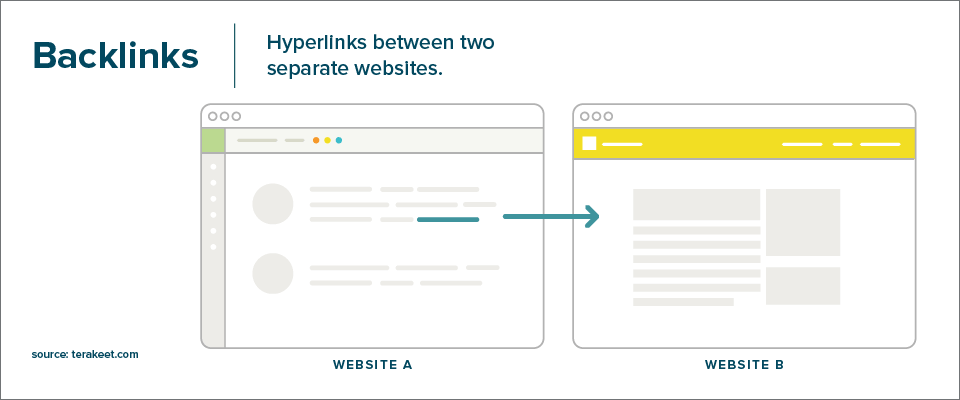
How to Improve SEO Rankings in 2022 (26 Ways)
Aug 29, 2020|Read time: 15 min.
Key Points
- Frustrated with your SEO results? Learn how to improve SEO so that your brand achieves greater visibility, traffic, leads, and overall performance.
- First, make sure that the structural and technical foundation of your website is rock solid.
- In addition, create amazing content that your audience will value, and acquire high-quality organic backlinks.
Organic search delivers unprecedented growth opportunity for brands that invest in the channel. When you build out a sophisticated program and learn how to improve SEO, you can expect results like these:
If you’re frustrated with your organic search performance, you have plenty of company. According to Ahrefs, 90.63% of pages get no organic search traffic from Google
But, even if your pages rank well and your website gets more organic traffic than your competitors, there’s always room for improvement. In fact, when it comes to search engine optimization (SEO), there’s no such thing as done.
So, are you ready to break out of the pack and gain massive organic traction? Read on, and learn how to improve SEO rankings so that your brand achieves greater visibility, traffic, leads, and overall performance.
How to improve your SEO strategy
With SEO strategy, it’s important to think holistically about your website. You need high-quality content, and you need high-quality domains pointing at your web pages.
First, though, you should make sure that your structural and technical foundation is rock solid. Here’s how to do that:
1. Organize your website architecture
Is your website easy to navigate? Is the hierarchical structure logical? URL structure matters. Each folder and subfolder in your URL provides search engines with more context around what’s on the page, and how the URL relates to the overall website.
When organizing your site, pay attention to information architecture and enable site visitors to easily find what they want. If users can locate pages within three clicks, you’ll help to ensure a healthy crawl efficiency by Google when it scans your website. Read more about how to create the ideal website architecture.
On-Page SEO Checklist
Get Terakeet’s checklist for on-page optimization and copywriting.
2. Reduce page load time
In 2010, Google applied for a patent related to site speed as an organic search ranking factor. The patent was eventually granted on February 4, 2014 (US Patent 8,645,362).
Representatives at Google openly speak to the value of fast-loading web pages. And this focus can be seen in many Google initiatives, from Google DNS to Google Hosted Libraries, Google Fiber, PageSpeed Tools, AMP Project, Core Web Vitals, and Google’s contributions to the latest web performance standards and protocols.
When looking at your site speed, pay special attention to mobile. Mobile users are often on slower internet connections, yet even so, mobile users tend to expect pages to load at least as fast as on a desktop.
Reducing page load time isn’t just good for user experience, either. It also means better business results. According to Google and Deloitte, improving your mobile load time by merely 0.1s can boost conversion rates, for example, by 8.4% for retail and 10.1% for travel, as well as reduce bounce rates.
To get started addressing your page load time, take baseline search engine rankings and see where you need to attack slowdowns using the following tools:
3. Ensure your site is mobile-friendly
With the recent proliferation of mobile devices, more searches are conducted today on smartphones than on desktop. Many companies, such as retailers targeting younger audiences, derive the vast majority of their traffic from mobile.
With so much mobile traffic, Google has turned its focus on mobile as the future. For example, Google announced a shift to mobile-first indexing, which it currently states will be completed for all websites around the world by early 2021.
What this means is that your website needs to be mobile friendly, and it also needs to be fast on mobile. If you primarily focus on the desktop version of your website, it’s time to flip the focus and make mobile the centerpiece of your SEO efforts.
Want to double check that your website is mobile-friendly? Try these tools:
4. Address any indexing issues
In order to be visible in the organic search rankings, your pages need to be indexed by Google. If technical obstacles are in the way, then your search engine visibility can potentially go to zero.
Check your robots.txt file to ensure that there are no directives instructing the Google spider not to crawl important parts of your website.
Certain companies have more than 4,000 or 5,000 lines of HTML code before the first instance of copy on the page appears. This simply makes Google’s job much harder in identifying what your page is about and why they are an authority on the topic. Streamline your code.
Fortune 500 Enterprise SEO Playbook
Discover how enterprise brands can create content that builds authentic audience connections.
5. Fix 404 pages and broken links
If a user visits a page you removed from your website, then they’ll encounter a 404 error (page not found). This indicates that the site visitor is on a valid domain but the specific URL path does not exist.
If you have any 404 pages, correct them with a 301 redirect to the proper destination page.
Google doesn’t like 404 pages because they affect user experience. Furthermore, if users land on a 404 page from the Google search engine results page (SERP), that’s even worse because it will increase your bounce rate. Finally, deleted pages with lots of backlinks can’t pass along the authority they earned.
Many retailers or others with a large inventory of products often face the challenge of keeping up with an endless stream of changing products. In the process, they unfortunately can generate a number of 404 pages as products are pulled from the website.
It’s important to keep up to date with any pages that are inactivated, so that Google is aware that your site is functional and trustworthy.
In other words, a great way to improve SEO performance is to fix 404 error pages.
6. Standardize URLs
Each of your web pages should have a single, unique URL.
Companies run into SEO problems when instead each web page potentially has multiple URLs. For example, let’s say your home page is www.domain.com. It’s possible that this page may appear for the following URL variations:
- https://www.domain.com
- https://www.domain.com/index.htm
- https://www.domain.com/home.asp
- https://domain.com
- https://domain.com/index.htm
- https://domain.com/home.asp
- http://www.domain.com
- http://www.domain.com/index.htm
- http://www.domain.com/home.asp
- http://domain.com
- http://domain.com/index.htm
- http://domain.com/home.asp
- domain.com
- domain.com/index.htm
How does that hurt your SEO?
Search engine crawlers will view each of those URLs as separate pages, yet the content is identical. Not only will that confuse Google, but it will also dilute your backlink profile if websites link to different versions of a URL.
7. Clean up canonicalization issues
A rel canonical is a technical solution for specifying a primary URL to Google.
Often, a rel canonical will be specified in the HTML of a page when there’s duplicate content, or in the case of a retailer, canonicals are useful for dealing with product variations. For example, www.domain.com/shirts/this-shirt/ may be the main page for a shirt, Each color variation, though, may be differentiated through faceted search (e.g., www.domain.com/shirts/this-shirt?color=red, www.domain.com/shirts/this-shirt?color=blue, www.domain.com/shirts/this-shirt?color=yellow).
In this case, you want Google indexing only the primary shirt page (www.domain.com/shirts/this-shirt/), and so you could apply the following rel canonical to the color versions:
<link rel=”canonical” href=”https://www.domain.com/shirts/this-shirt/”>
Using a canonical URL for every set of similar URLs improves the SEO for your website, as Google understands which URL to count for organic search purposes. Any links pointing to the URL variations will then be counted and consolidated for the primary URL.
You can even use canonical URLs that are self-referencing to the current page. Just be sure that the development team does not have any rogue canonical URLs still pointing at the development or staging site.
You can use Google’s URL Inspection Tool to check the URL status of any of your pages.
8. Use clean, optimized URLs
We can’t answer the question of how to improve SEO results without discussing URLs. You should make it easy for Google to interpret your URLs, whether a category page, product page, blog post, or any other type of page.
These are actual product pages from a well-known, major retailer:
- https://www.domain.com/en_us/productpage.0893133001.html
- https://www.domain.com/en_us/productpage.0877014001.html
- https://www.domain.com/en_us/productpage.0502190006.html
Obviously, from the URL alone, it’s impossible for Google to understand what the page is about, whether from a category or a product perspective. A better, more optimized approach would be something like the following:
https://www.domain.com/en_us/womens/shirts/satin-boat-necked-blouse
Value of Organic Search White Paper
See how an investment in organic search delivers ROI that compounds over time.
9. Take care of the SEO 101 basics
If you really want to know how to improve SEO, start with on-page SEO basics like page titles, subheadings, alt tags, and anchor text. Remember to go through the following types of issues and make sure your site is fully optimized:
- Use an XML sitemap to communicate with Google the web pages that should be included in its index.
- Use HTTPS for a secure website.
- Optimize your title tags which are a big Google search ranking factor.
- Optimize your meta descriptions.
- Include image alt text so that Google can accurately read your images.
- Improve your website architecture so that Google can efficiently crawl and interpret your site.
- Change temporary redirects to 301 redirects.
- Fix redirect chains.
- Add internal links.
- Keep your website software up to date for a secure website.
How to improve SEO through content
1. Develop a blog strategy centered on SEO
Beyond technical fixes, blogging is one of the most effective ways to improve SEO and increase your visibility in Google.
Blogging is effective because you can publish content about a wide variety of topics and rank on thousands of keywords — both high-volume and long-tail.
Why is this important? Because most searches are for long-tail keywords. Long-tail keywords are unpopular keyword phrases with low search volume and high variation. In other words, each query is only searched a few times per month because they are either very specific search terms, or because people phrase their searches many different ways. Many long-tail keywords include multiple words.
Put it all together, and blogging provides you with a platform to rank for many different keywords, well beyond what your home page or category or product pages would enable.
2. Produce high-quality content
Whatever content you create, make sure it’s high quality with a high degree of readability, and is based on solid keyword research. Google frequently states the value of high-quality content. So, if you want to improve your SEO and Google rankings, your content strategy should focus on producing high-quality content that your audience will value.
3. Make it compelling
Any brand can create content. Any brand can throw a few keywords into its content. However, creating content for the sake of creating content will only lead to frustration. For both you and your audience.
Instead, aim higher.
Write content that captivates your audience. Engage them. Make it compelling.
That will make it more likely that they will not only like your brand more, but they will also share and link to the content, also helping your organic search performance.
4. Map content throughout the customer journey
Customer journey mapping helps you increase the effectiveness of your SEO.
Create content for the top of the funnel, when your audience is searching for ideas, answers, and solutions, yet they do not yet have a particular brand or product in mind. This is an area where organic search has a clear advantage over PPC. That’s because the top of the funnel is typically too expensive for paid search given the lack of immediate conversions.
But, don’t forget about the middle of the funnel when they are comparing options. Or, the bottom of the conversion funnel when they’re ready to make a final decision. One of the aspects of SEO that’s so effective is that you can customize content so that the right person finds it at precisely the right time.
We cover the funnel in more detail in our article about ToFu, MoFu and BoFu.
5. Optimize content for search intent
A reliable way to improve SEO for greater digital marketing ROI is to align your content with user intent. I explained what search intent is here if you want the full overview. I suggest you read it because it’s one of the most important SEO factors right now.
When someone searches for “best [product],” they most likely want a third-party assessment of the best options. However, if they search for [product] reviews, they clearly want a list of opinions about a specific product. If they search for “[product] near me”, they probably want to visit a store to purchase or pick up the item. Finally, if they search for “what is [product]”, they want a definition, or more information about the category.
All of these searches could be for the same product, but with extremely different intent. The best experience they can have is if the search results align perfectly with what they had in mind.
6. Develop long-form content
Improving SEO through content means including long-form content in your mix. Long-form content is helpful in your SEO efforts in that it provides you with ample opportunity to create authoritative pieces that your audience will love.
Gone are the days when a 500-word blog post could rank for a competitive query with some SEO voodoo.
Now, you’ll need authoritative, trustworthy, comprehensive content to dominate. With long-form content, you can also cover a broader spectrum of sub-topics, as well, helping you to build content that can rank for a portfolio of related long-tail keywords.
In fact, brands that invest in premium content handily dominate Google search rankings. For example, Byrdie crushes billion dollar beauty brands without leaning on ads.
Content Strategy Playbook
The Fortune 500 CMO’s guide to content strategy.
7. Occupy more SERP real estate through content atomization
Here’s how to improve SEO while getting more marketing ROI out of the content you create.
If you publish a blog post, it may be able to gain SEO visibility on the first page in Google. If you slice and dice the post, and create ancillary content pieces in different formats, you give yourself a greater chance that your content can occupy a greater percentage of real estate in the search results.
For example, you may have a content pillar page, but then also a related video, SlideShare, and infographic. This atomization of your content helps you to satisfy the information consumption preferences of different members of your audience, while also helping your SEO.
8. Prune and optimize your old content
You’re looking at the number of sessions for a site after an eight-month spring cleaning. Organic sessions increased from 8,598 in June 2018 to 30,927 in February 2019 – a 360% increase in organic search traffic. Not bad, but what’s really staggering is that only five new posts were added to the site in this period.
Remember that when exploring how to improve SEO, don’t just focus on content creation. You should also consider content pruning and prioritization. If you have old, outdated information, it’s quite all right to remove it, consolidate it, or update it. Your goal should always be to publish the most relevant content possible.
Your entire portfolio of content should be working hard for you. Keep it fresh and updated, and prune dead leaves from the tree when you need to.
You should also leverage SEO tools like Clearscope and WordPress plugins like Yoast to make sure your content is properly optimized.
How to improve SEO through backlinks

1. Secure high-quality backlinks
When thinking about how to improve SEO for your website, you should look beyond a solid technical foundation and great content. Seek also to acquire high-quality backlinks as the third pillar of your SEO efforts.
Backlinks are one of the most important factors in organic search rankings, and many companies unfortunately ignore it given that it’s one of the most challenging aspects of SEO. A stunning 66.31% of web pages do not have any backlinks.
This represents a great opportunity for you to win high-quality backlinks while jumping out ahead of your competition in the process.
2. Conduct strategic outreach
As a cornerstone of your backlink acquisition process, you should conduct strategic outreach. Contact and build relationships with relevant and reputable publishers and influencers. Seek ideas from them upstream to ensure the output will thrill their audiences. The organic backlinks that you secure from them can be extremely valuable.
3. Carry out link reclamation
Are there past links from third-party websites no longer work? Are there brand mentions from others without links.
This is low-hanging fruit. These sites have already indicated that they want to direct their readers to your brand. Fix any broken links and see if they will add a link for any unlinked brand mention, and you’ll incrementally strengthen your backlink profile overall.
4. Amplify your content
Just produced an awesome research report, forecast, video, webinar, online tool, or even blog post? Get the word out!
When you have content that’s share-worthy, be sure to let those who would find it valuable know about it. This may be industry insiders, topical experts, or popular bloggers. Hopefully, it catches their eye and they then share with their audiences via social media and link back to it.
5. Scale your backlinks
If you’re in a highly competitive market, you’re going to need more than just a few backlinks. You may be in need of something much more scalable.
Terakeet finds strategic outreach and link building so critical in the SEO process that we’ve built a platform, Chorus, that enables us to precision-target publishers and influencers at scale, unleashing hundreds (and in certain cases thousands) of engagements with targeted audiences.
How to improve SEO through analysis
1. Track SEO metrics like rankings, traffic, and conversions
You won’t know how to improve SEO unless you track key SEO metrics, first. Use Google Analytics to measure organic traffic growth and conversions. Fire up Google Search Console or SEMrush to identify new keywords. Use software like Stat, or use a SERP API to monitor rankings.
When you know what’s working, and what isn’t, you can optimize further to improve SEO results.
2. Conduct experiments
You’ll never know what will maximize organic search performance unless you conduct experiments and see whether new SEO tactics would help you achieve more. So, be sure that a portion of your SEO program is dedicated to experiments and tests to uncover incremental gains.
3. Double down on what’s working
When you find an approach that works effectively, double down on it and deploy it across your entire search engine optimization program. Do SEO Topic Clusters improve your organic search results? Create more of them. Is YouTube optimization pushing your videos onto Google page one? Produce videos for additional keywords. If visual content such as data visualizations or infographics or screenshots are doing the trick, keep them coming.
With SEO, if something is working and if it is based on high-quality and a positive user experience, it’s likely to help performance on a more scalable level.
4. Ensure the site experience is superior
How to improve SEO is tightly tied with how to improve the user experience. Ultimately, you want qualified traffic that is going to have a valuable experience while on your site. You want them to find what they were looking for and to uncover the answers to the questions in their minds.
A quality SEO program is all about fulfilling the intent of the searcher and then delivering the right experience at the right time. SEO and user experience just go well together.
Summary: How to Improve SEO
It’s hard work to generate superior SEO results. It requires a solid technical foundation. High-quality content is another must. But you can’t stop there. You need to spend the time and energy generating high-quality backlinks, as well.
SEO provides you with an unprecedented opportunity to deliver major results for your brand. Capitalize on these instructions how to improve SEO, and you’ll be sure to start seeing major improvements moving forward.




